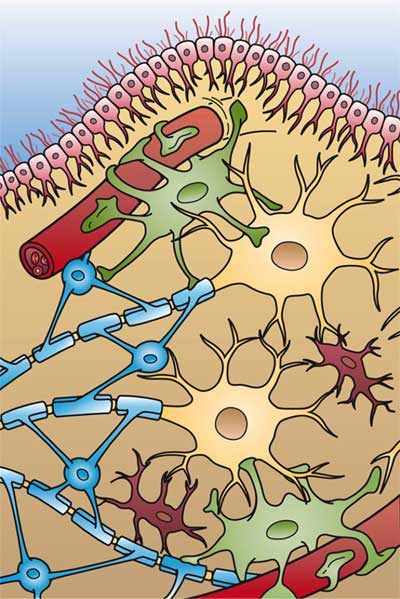glia

Four different types of glial cells are found in the central nervous system: ependymal cells (light pink), astrocytes (green), microglial cells (red), and oligodendrocytes (functionally similar to Schwann cells in the peripheral nervous system) (light blue).
Glia form the supportive and nutritive tissue of the vertebrate central nervous system. Glia, or neuroglia, consists mainly of cells derived from embryonic neutral tissue, some with long fibrous processes, others forming myelin by wrapping flattened processes in a spiral around nerve fibers. Glia also contain mesodermal cells (microglia) closely similar to macrophages.
Glial cells outnumber neurons by between five and ten to one, and make up some 40% of the volume of the brain and spinal cord.


